Charakterystyka Matcha
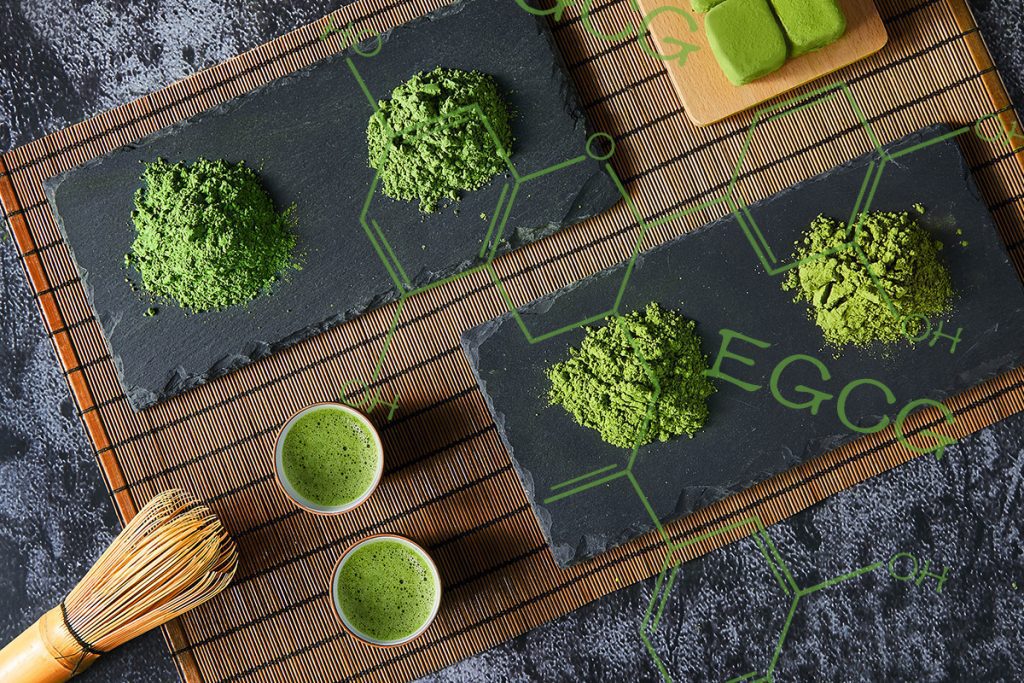
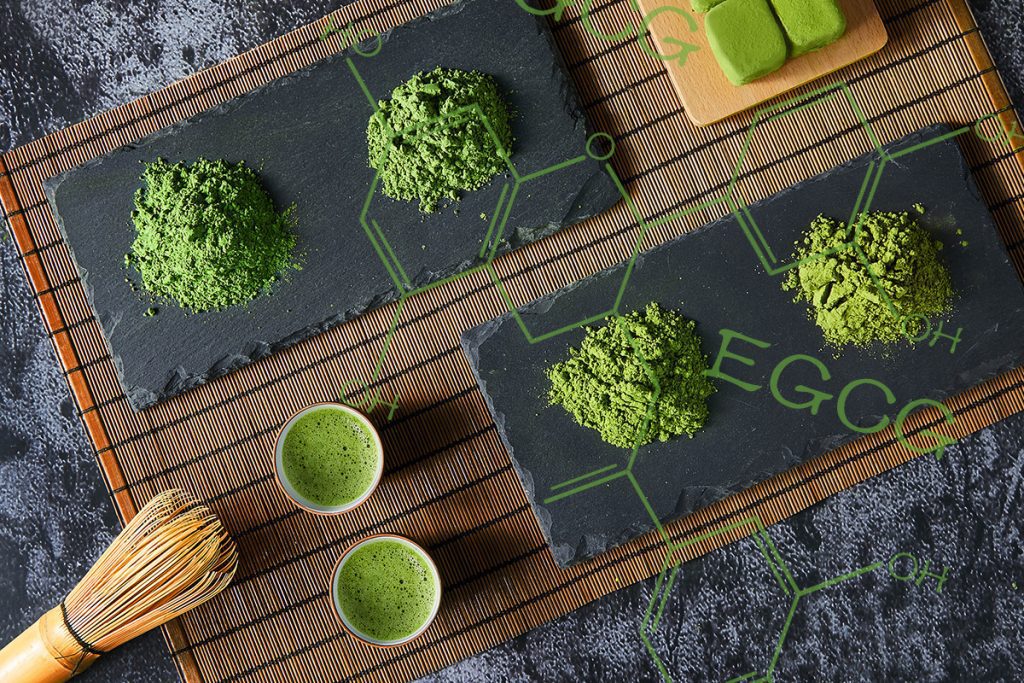
Charakterystyka Matcha
1. The Brief of Main Function About Green Tea
①.Control high blood pressure
②. Control cholesterol
③. Be used as a natural diuretic
④. Reduce the risk of diabetes
⑤. Reduce physical and psychological stress
⑥. Improve mood and alertness
⑦. Boost the immune system
⑧. Reduce bad breath
⑨. Prevent tumor growth
⑩. Reduce strokes by 21%
⑪. Promotes the oxidation of fats
⑫. Improves metabolism
⑬. Stabilizes insulin
⑭. Prevent influenza
⑮. Prevent cataracts
⑯. Prevent glaucoma
⑰. Improves longevity by supporting anti-aging
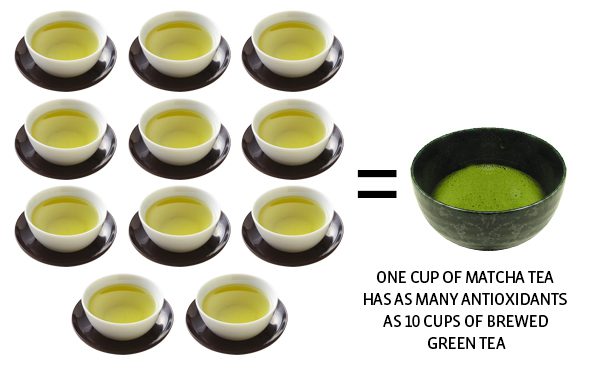
2. Function Clarification of Matcha
Matcha contains rich nutrients and trace elements, the main component is tea polyphenols, caffeine, free amino acids, chlorophyll, protein, cellulose, vitamin C, A, B1, B2,B3, B5, B6, E, K, Potassium, Calcium, Magnesium, Iron, Sodium, Zinc, Selenium, Fluorine etc, nearly 30 kinds. There are no additives, no preservatives, and no artificial colors in our matcha.
I. Anti-ageing
Matcha contains antioxidants which help anti-ageing. Because of the metabolism process by body, if peroxidization, it will produce a large amount of free radicals, it is easy ageing, also could cause your cells be injured. SOD (super oxide dismutation) is the scavenging for free radical and can effectively remove excess free radicals, prevent the damage that free radical occurred to human body. The tea catechins in Matcha can significantly improve the activity of SOD, scavenging free radicals.
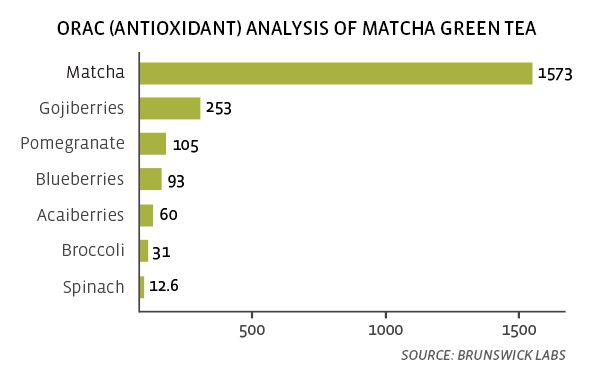
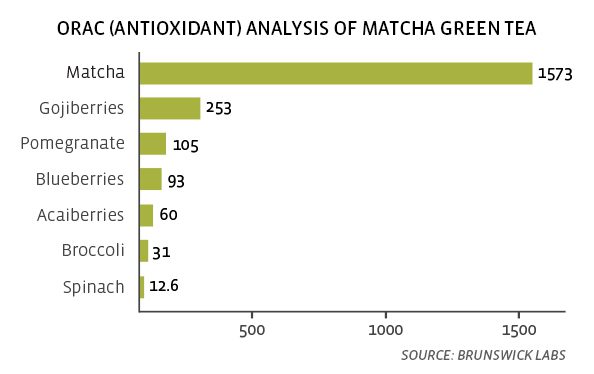
II. Anti-bacterial
Research shows that the catechins has the effect of inhibitory that cause human body pathogenic, at the same time it won’t hurt good intestinal bacteria’s breed, therefore matcha has the function of care intestine.
III. Reduce Blood-fat
The animal experiments done by scientists showed that the catechin in Matcha can reduce plasma’s total cholesterol, free cholesterol, low density lipoprotein cholesterol and the amount of triglyceride ,at the same time it could increase high-density lipoprotein cholesterol. The experiments to human body showed that it would inhibit platelet’s aggregation, reduce arteriosclerosis incidence. Matcha contains flavonoids alcohols, could antioxidation, which also can prevent blood clots and platelet formed, reduce cardiovascular disease.
IV. Fitness
Matcha contains theophylline and caffeine, can via lots of roles to activate protein kinase and triglyceride lipase, reduce the accumulation of adipose cell, so that achieve the effect.
V. Prevent Caries and Eliminate Halitosis
Matcha contains fluoride, the catechin has the function of inhibiting caries produced, reducing dental plaque and periodontitis happened. The tannic acid has the function of antiseptic, can prevent food residue and breed bacteria, that’s why it can effectively prevent halitosis.
VI. Prevent Cancer
Matcha has the function of inhibit certain cancers, but its principle is limited to inference stage. To prevent the occurrence of cancer, drink more tea certainly has the positive encouragement function.
VII. Whiten and Anti-ultraviolet Function
Through animal experiments experts found that the catechins could resists UV-B which would cause skin cancer.
VIII. Meliorable Indigestion Situation
Recent research report shows that Matcha can help improve indigestion situations, such as the acute diarrhea caused by bacteria; at this time you could drink some matcha to reduce the state of illness.
3. Nutritional Facts of 100g Matcha
Studies have shown that tea polyphenols can remove harmful free radicals in body, can be reproduced α-VE, VC, GSH, SOD, such as efficient antioxidants in the human body to protect and repair the antioxidant system, to enhance the body immunity, for anti-cancer, anti-aging has a significant effect. Drinking green tea in long term can lower blood sugar, blood lipids, and blood pressure, thus preventing cardiovascular and cerebrovascular diseases. The cellulose in matcha is 52.8 times that of spinach, is 28.4 times of celery. The effect of helping digestion, keeping fitness,losing weight and removing whelk mark are popular in beauty-conscious women
Ingredient | Content | Function |
|---|---|---|
Protein | 6.64g | Form the nutrients in the muscle and bone |
Sugar (polysaccharide) | 23.67g | To maintain the body and dynamic energy |
Food fiber | 55.08g | Help discharge of harmful substances in the body, prevent constipation and lifestyle disease |
Fat | 2.94g | Activity energy source |
Tea polyphenols | 12090μg | An anti-oxidant powerhouse. 137 times more EGCG than regularly brewed green tea. |
Vitamin A | 2016μg | Beauty, beauty skin |
Vitamin B1 | 0.2mg | Energy metabolism. The brain and nerve sources of energy |
Vitamin B2 | 1.5mg | Promote cell regeneration |
Vitamin C | 30mg | Collagen generated an indispensable component, function between the health of the skin, whitening, etc |
Vitamin K | 1350μg | Help the loss of bone calcium, prevent osteoporosis, maintain the balance of the blood |
Vitamin E | 19mg | Anti-oxidation, anti-aging |
Folic acid | 119μg | Prevent unhealthy cell replication, inhibit cancer cell growth, and nutrition for pregnant women |
Pantothenic acid | 0.9mg | Maintain healthy skin and mucous membranes |
Calcium | 840mg | Prevent osteoporosis |
Iron | 18mg | Blood to generate and maintain, especially for women |
Sodium | 8.32mg | Help to maintain the fluid balance of the medial and lateral cell |
Potassium | 727mg | Maintain the function of the nerve and muscle, expel excess salt |
Magnesium | 145mg | To prevent causing circulator disorders |
Plumbum | 1.5mg | Maintain the health of skin and hair |
4. The Comparsion of Eating Matcha and Drinking Green Tea
The following list is the compared result of eating matcha and drinking green tea. Eating matcha means to consume all ingredients of matcha, but brewed green tea is only the infusion of green tea that is soluble in water.
Ingredient | Unit | Matcha | Zielona herbata |
|---|---|---|---|
Sodium | mg | 3 | 3 |
Potassium | mg | 2200 | 27 |
Calcium | mg | 450 | 3 |
Magnesium | mg | 200 | 2 |
Phosphorus | mg | 290 | 2 |
Iron | mg | 20 | 2 |
Plumbum | mg | 3.2 | 0 |
Copper | mg | 1.3 | 0.01 |
Vitamin A | ug | 13 | 0 |
Vitamin B1 | mg | 0.36 | 0 |
Vitamin B2 | mg | 1.43 | 0.03 |
Vitamin B6 | mg | 0.46 | 0.01 |
Vitamin C | mg | 260 | 6 |
Niacin | mg | 55 | 0.31 |
Folic Acid | ug | 1300 | 16 |
Pantothenic Acid | mg | 3.1 | 0.04 |
5. The Chemical Composition
Ingredients | Content(%) | Compounds |
|---|---|---|
Proteins | 20-30 | Glutelin, Protamine, Globulin, Albumin etc. |
Carbohydrates | 20-25 | Cellulose, Pectin, Starch, Glucose, Fructose, Sucrose, Tea Polysaccharide etc. |
Lipid Compounds | 8 | Phospholipid, Sulpholipid and Glycolipid, Tea Saponin |
Tea Polyphonels | 24-36 | Catechins, Flavone, Flavonol, Phenolic acid, Leucoanthocyanidin, Anthocyanin |
Alkaloids | 3-5 | Caffeine, Theophylline, Theobromine |
Amino Acids | 1-4 | Theanine, Asparaginic acid, Glutamic acid |
Tea Pigments | 1 | Chlorophyll, Carotinoids, Xanthophylls, Anthocyan |
Aromatic Substances | 0.005-0.03 | Alcohols, Aldehydes, Acids, Ketones, Lactone |
Vitamins | 0.6-1.0 | VC, VA, VE, VD, VB1, VB2, VB6 etc. |
Mineral Substances | 3.5-7.0 | Potassium, Phosphorus, Calcium, Magnesium, Iron, Manganese, Selenium, Aluminum, Copper, Sulphur, Fluorine etc. |





Kategoria Blog





Kategoria produktów





Kategoria sklepu
Search
Recent Posts
- How to Bew an Exqusite Cup of Efoofan Organic Dragon Well Loose Leaf Tea
- How to Brew a Good Cup of Organic Longjing Tea? 3 Ways
- Podsumowanie aktywności antyoksydacyjnej herbaty
- Polityka wdrażania zrównoważonej ekologicznej produkcji w ogrodach herbacianych
- Historia przemysłu herbaty organicznej w Lin'an
Recent Comments
- couvreur charpentier - Vision, Mission, Strategy & Principles of EFOOFAN Organic Tea
- couvreur - Vision, Mission, Strategy & Principles of EFOOFAN Organic Tea
- tombolbet88 - Vision, Mission, Strategy & Principles of EFOOFAN Organic Tea
- sv388 - Vision, Mission, Strategy & Principles of EFOOFAN Organic Tea
- url - Vision, Mission, Strategy & Principles of EFOOFAN Organic Tea





